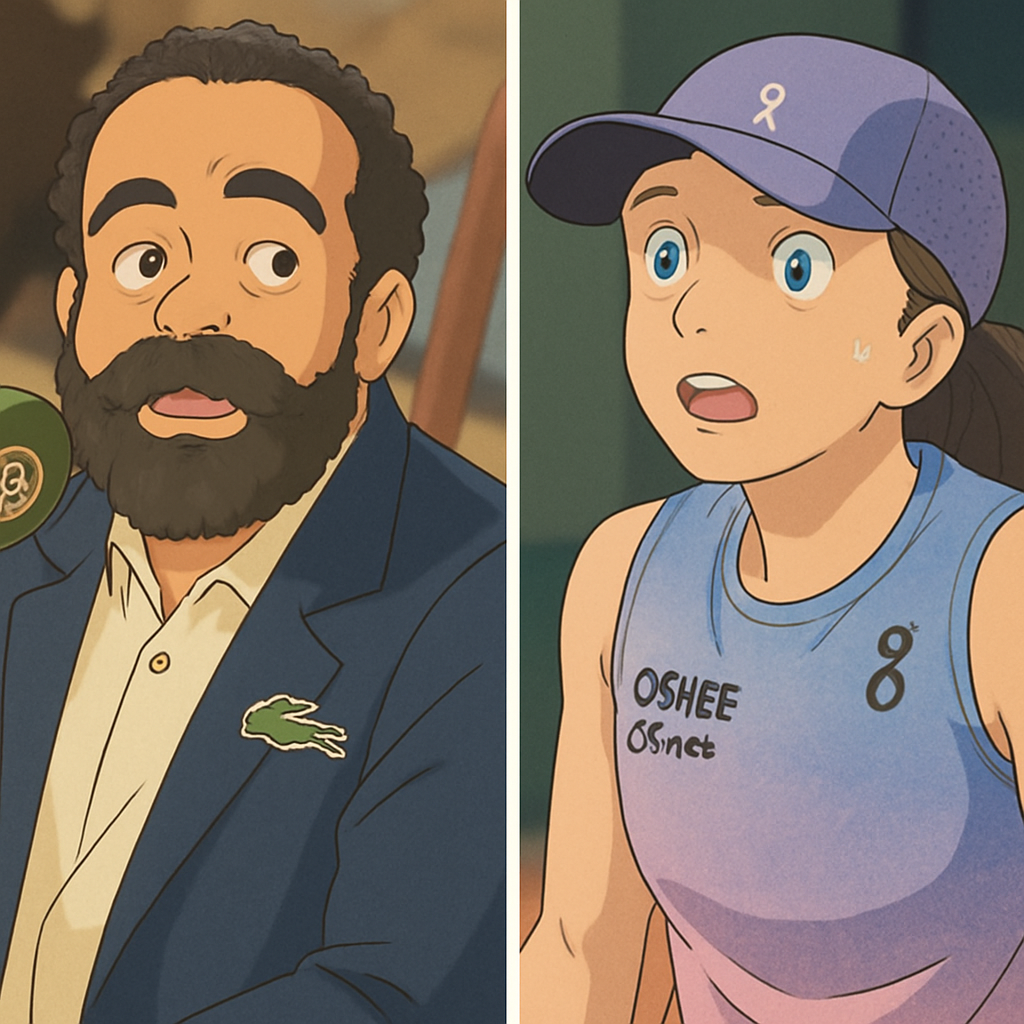PARIS — World No. 1 Iga Świątek unleashed a fiery outburst at the French Open umpire during her tense fourth-round match against Anastasia Potapova, accusing the official of refusing to check a disputed mark on the clay court. The incident, which unfolded in the second set, saw Świątek point to the spot and demand, "You have to check!" before delivering a sharp three-word accusation that reverberated across Court Philippe-Chatrier.
The confrontation occurred at a critical juncture in the match, with Świątek leading 4-2 in the second set after dropping the opener 6-7(5). A Potapova forehand was called in, but Świątek immediately challenged the ruling, gesturing emphatically at a mark near the baseline. When chair umpire Aurélie Tourte declined to leave her seat to inspect it, the four-time Grand Slam champion snapped, "It's your job!" — drawing gasps from the crowd.
The Controversial Call
Clay court tennis uniquely allows players to challenge marks, with umpires typically verifying disputed calls by examining the ball's impression. Tourte's refusal to do so marked a rare departure from standard protocol. Świątek, known for her composed demeanor, grew visibly frustrated as the exchange escalated:
- Świątek pointed repeatedly at the mark, insisting, "That's out by two centimeters!"
- Tourte responded, "I saw it clearly in," without moving from her chair
- The Pole fired back, "Then you're blind!" — immediately covering her mouth in apparent regret
The incident sparked immediate debate among commentators. Former champion Jim Courier noted during Tennis Channel's broadcast, "This is exactly why we have mark-checking on clay. When a player of Iga's caliber questions a call this vehemently, you owe it to the sport to take a look."
Match Implications
The disputed point proved pivotal. Had the call been overturned, Świątek would have earned a break point at 15-40. Instead, Potapova held serve and eventually forced a second-set tiebreak. Though Świątek rallied to win the match 6-7(5), 7-5, 6-4, she later admitted the incident affected her focus. "I lost some energy there," she told reporters. "When you fight so hard and feel wronged, it's tough to reset immediately."
Historical Context
This isn't the first Roland Garros controversy involving mark-checking. In 2020, Novak Djokovic had a heated exchange with officials over a similar refusal. The ATP subsequently clarified protocols, mandating umpires inspect marks when players request. However, the WTA's guidelines remain less explicit, leaving discretion to chair officials. Tennis analyst Mary Carillo observed, "The inconsistency drives players crazy. If you're going to allow challenges on clay, the rules need to be black and white."
Post-Match Reactions
Tourte, a seasoned official who's worked multiple Grand Slam finals, declined comment post-match. Świątek struck a conciliatory tone in her press conference but stood by her position: "I shouldn't have said some things, but players rely on umpires to make fair checks. When that doesn't happen, especially on clay where marks are visible, it's frustrating."
The WTA has not indicated whether either party will face disciplinary action. Rule 26 of the 2024 WTA Official Rulebook states players can be fined up to $20,000 for "verbal abuse of an official," though context is considered. Świątek's previously spotless conduct record may work in her favor.
Broader Implications
The incident has reignited discussions about technology's role in clay-court tennis. While hard and grass courts use electronic line-calling, clay remains dependent on human judgment. Some propose adopting the "Hawk-Eye Clay" system trialed at 2022's Madrid Open, which uses cameras to reconstruct ball marks. As Świątek prepares for her quarterfinal against Markéta Vondroušová, one thing is certain: this controversy won't fade quietly from Roland Garros lore.
In closing, the clash highlights tennis' ongoing tension between tradition and modernization. As 18-time Slam champion Chris Evert tweeted post-match: "Great champions fight for every point - sometimes too fiercely. But if we're keeping marks on clay as part of the game's charm, then checking them properly isn't too much to ask."

